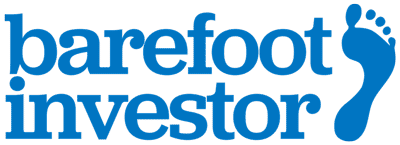How to Make a Budget
Next week is the budget … and you know what that means?
Not much.Just a bunch of middle-aged white guys trying to put lipstick on a pig.
Here’s the truth that you won’t hear on Tuesday night: we’re paying for our government groceries on our nation’s credit card.It’s true.
Wayne Swan inherited a $21 billion surplus in 2006; six years later we had a $48 billion deficit. The boom is now long gone, but Sco-Mo (like Smok’n Joe before him) has continued to fall into the same trap. It’s a bit like the out-of-work miner who recently emailed me saying: “I’m broke -- should I sell my jetski to pay off my credit card?”
Me, I don’t do budgets (government or personal).
However, I do have a good handle on my numbers, and how much it costs to run my house of representatives. Keep reading and you will too.
Think of this article like the sealed section of Dolly magazine.
“Is my bank balance supposed to look like this?”
“Does everyone really spend this much?”
“Am I normal?”
Well, let’s rip it open and take a look.
‘You Inc’: 60 per cent of your income
How much does it cost you to keep the lights running and the kids from drinking out of the dog’s bowl?
Well, a good yardstick is you’ll be allocating 60 per cent of your after-tax household income to food, shelter and Netflix. In other words, all the things you need to live safely in the suburbs.
Here are some rough percentages based on an average household income:
Housing: 30%
Utilities (power, gas, water, broadband, phones): 5-10%
Transport: 5-10%
Insurance: 5%
Food: 5-10%
Hang on. I know what you’re thinking.
Sure, these percentages work for people on an average income, but they’d blow out for people on really low incomes (with more of their money going towards food and shelter), and for those on really high incomes (BMWs, baby!).
That’s true. It’s just a guide. Close enough is good enough. Run the numbers for your household.
Here’s the thing: knowing how much it costs to run ‘You Inc’ -- actually having a monthly dollar figure -- is incredibly powerful.
See, if you ask someone how much their basic living expenses are (and I do, and quite often) they’ll generally parrot back how much they earn. That’s because (a) they’ve never bothered to figure it out, and (b) whenever they get a pay rise they spend more, generally upgrading their homes and their cars. That’s normal. That’s what marketers have brainwashed us to do.
Yet it’s also what keeps people trapped in stressful jobs they hate, and in situations that aren’t healthy for them. Plenty of people lead lives of quiet desperation in trophy suburbs.
Let’s keep moving.
Savings: 20 per cent
Do you allocate 20 per cent of your hard-earned towards savings?
Most people don’t. (Including the government. Turnbull and his team spent two years complaining about ‘Labor’s debt and deficit’, but when they got approval to lift the nation’s debt, they ramped up debt from $153 billion to $400 billion.)
That’s because Australian households have some of the highest levels of debt in the world.
If you’re a card-carrying member of our credit card nation, you should first save $2,000 into a Mojo account (a high-interest online savings account).
Then you should start paying off your minor debts by attacking the smallest one first (say a parking fine), knocking it over, and then moving on to the next biggest one – and keeping going. I call this the ‘domino your debts’ method, because you knock them down one by one (other than your mortgage and your HECS-HELP debt).
If you really want to get happy, you should be devoting at least 20 per cent of your income to escaping the cult of credit and building up your Mojo. It’s the fastest way I know to gain financial self-confidence.
Splurge: 20 per cent
Do you direct 20 per cent of your money towards things that make you smile?
Again, most people don’t do this.If you’re ‘normal’ you’re like the Treasurer, shuffling money around while saying the right things (‘surplus in 2020’!) which you probably don’t even believe.
As I said at the beginning of this article, I’ve never followed a strict budget.
Where you live, what you drive and what you do for work are the heavy hitters of your financial life. Get them sorted -- and kept to a minimum -- and you’ll never have to do double-dunk your teabags again.
For me, getting a handle on my numbers was a game-changer.Knowing how much it costs to run ‘Pape Inc’ has meant that, as I’ve earned more, I haven’t just upgraded to a fancier car or suburb, none of which will make me any happier in the long run. Instead, I’ve directed the extra money to the things that really matter -- like my family, and travel, and sheep.
And that’s the cool thing about living within your means -- spending less than you earn. You’re free to really treat yourself with the nice things in life. (I’m writing this to you from an A380 sitting next to my old man, who I shouted a once-in-a-lifetime trip to see Warren Buffett.) There’s no need to feel guilty about splashing out when you have money in the bank.
Word up, Sco-Mo.
Tread Your Own Path!
